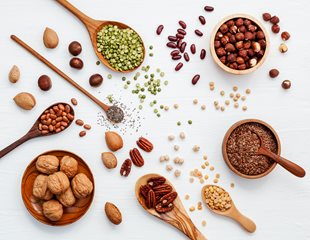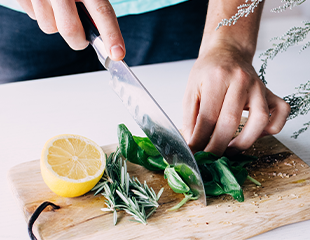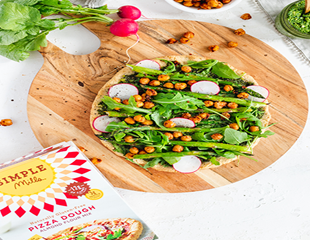There are some classic food combinations that were just meant to be: cheese and crackers, milk and cookies, peanut butter and jelly. Some foods pair well together for their flavor profiles, and some foods go together for their combined effects. This concept is known as food combining. We’ve partnered with Registered Dietician, Olivia Wagner (MS, RDN, LDN) to share all of the facts on food combining.
Food Combining: Ayurvedic Nutrition

Food combining is recognized in many different areas of health and wellness, one of them is Ayurveda. According to Ayurvedic food combining, each food has a distinct combination of tastes and energies, which ultimately has corresponding effects on the digestive system and the body as a whole. Combining foods with radically different energies can overwhelm the digestive fire and can cause a build up of toxins, which can produce unpleasant symptoms within the gut. In order to avoid these side effects, it’s important to develop a general awareness of the improper food combinations and the effects these combinations may have on your system. Notice which food combinations may be difficult to digest and how often you indulge in them. Pay attention to your digestion, energy and your overall mood after eating these food combinations then make adjustments accordingly.
Food Combining: Digestive Support
.png.aspx)
According to Wagner, some people use food combining to aid in digestive support and weight loss. When following a food combining diet, it is believed that slow digesting foods and fast digesting foods can affect pH levels, which may cause distress within the gut. By eating certain food combinations that may be harder to digest, an individual may experience decreased nutrient absorption. Wagner also notes that although there are a variety of food combining rules, many of them are contradictory, which is why it’s best to pay attention to the foods you eat and how they make you feel. Afterall, everybody and every body is different.
Food Combining: Functional Foods

Food combining can be used to discover which food combinations work best for you and your body, but food combining can also be used to find some of the best food combinations to support optimal health.
- Carbohydrates + Cinnamon. Cinnamon supports insulin sensitivity, so by including cinnamon on a piece of fresh fruit like an apple, atop a bowl of morning overnight oats or a homemade parfait, a dash of cinnamon is a wonderful way to support any potential blood glucose spikes.
- Dark Leafy Greens + Citrus. Combining dark leafy greens like kale, spinach and Swiss chard with a splash of fresh citrus flavor increases vitamin C absorption, so go ahead and add a squeeze of lemon to your afternoon salad.
- Plant Foods + Meat. Wagner explains that polyphenol-containing foods, like berries, ginger, leafy greens and turmeric can inhibit the formation of carcinogens when eaten with meats that have been cooked or seared over high heat. When cooking your favorite meat based dishes, use a marinade, like a garlic ginger marinade, before cooking or grilling.
- Probiotics + Prebiotics. Probiotics and prebiotics support a healthy gut microbiome, so enjoy food combinations like avocado slices with a spoonful or sauerkraut or chopped apples served with a cup of coconut yogurt.
- Starches + Vinegar. Eating vinegar before or during a carbohydrate rich meal can better support glycemic responses. Wagner recommends adding a splash of apple cider vinegar and olive oil to your lunchtime salad, a dollop of sauerkraut with your morning eggs and potatoes or a side of pickles with a handcrafted sandwich or wrap to better support the glycemic response.
Eat What Works for You and Your Body

Food combining is not a necessity to creating a nourishing meal. In fact, Wagner says that when you eat, your body produces a variety of enzymes that each have a different role in the digestion process. This means your body is already anticipating that you are going to be getting an array of food combinations all in one meal. A healthy body should be able to process a balance of whole food macronutrients in one sitting - it was designed to do this, so whether you like chickpeas on their own or added to a Spring Vegetable Pizza, the human body was made to handle your favorite food combinations.
Note: If you are interested in food combining, it is best to work with a certified and licensed health care professional like a registered dietitian.